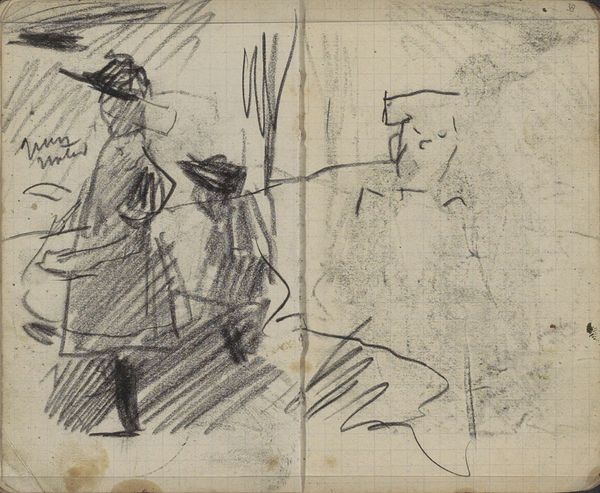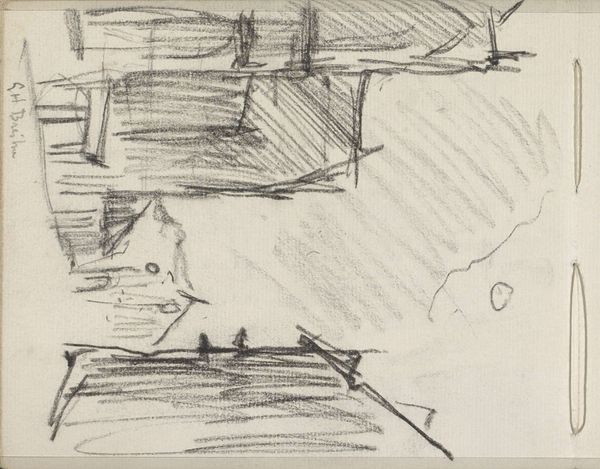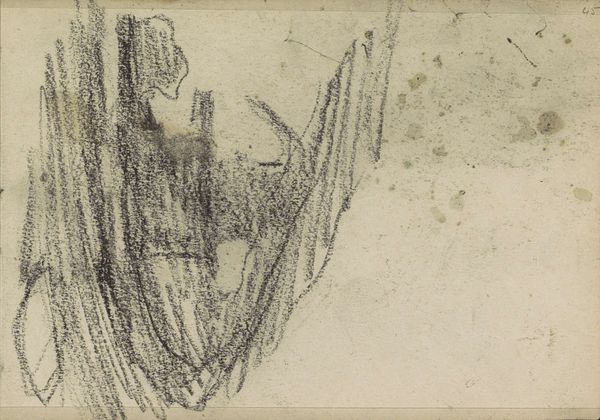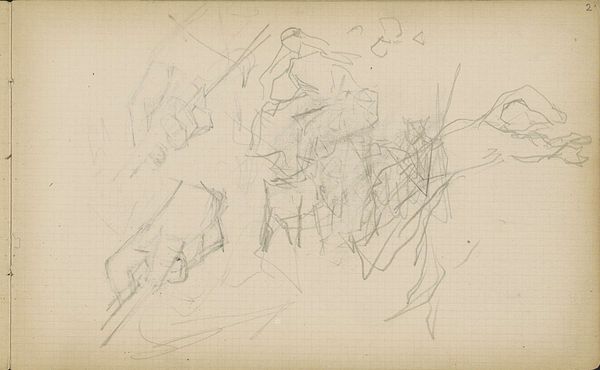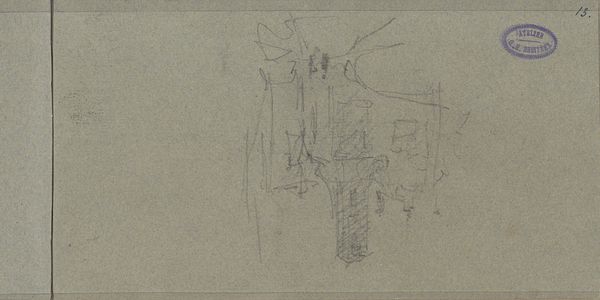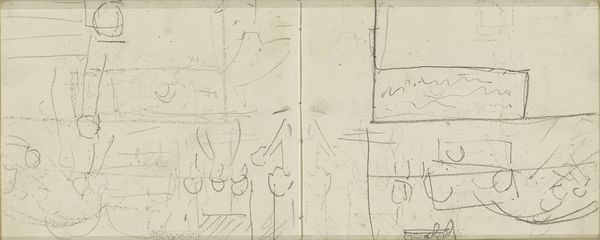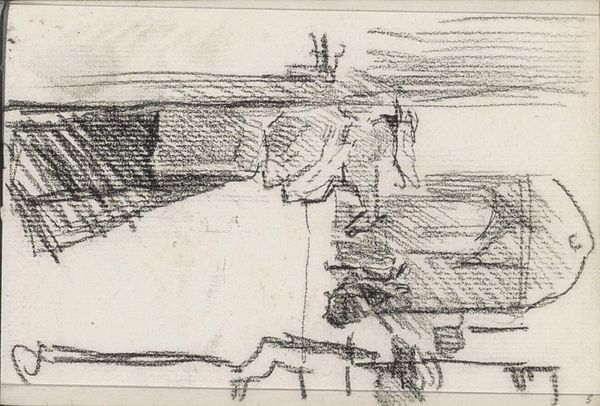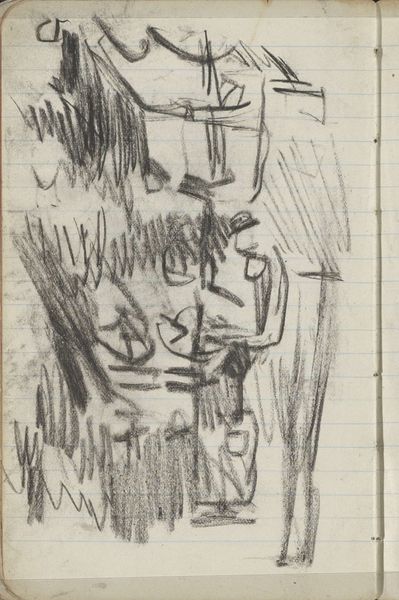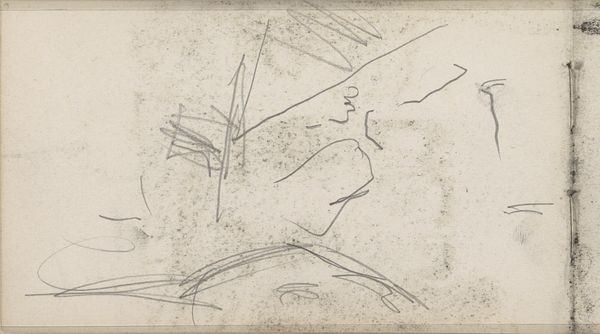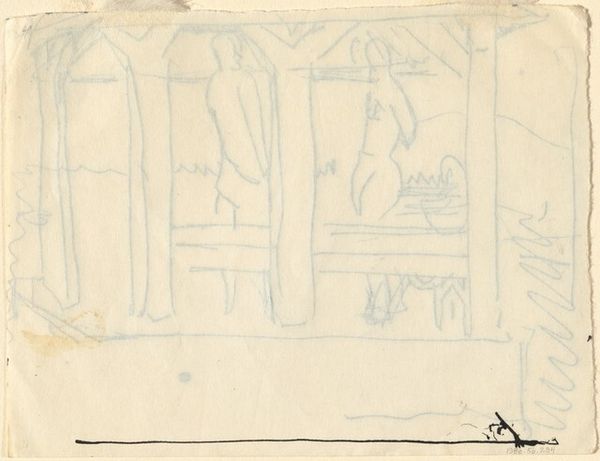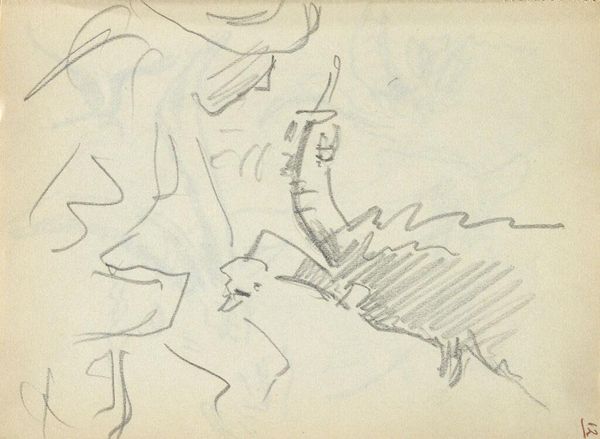
Dimensions: height 87 mm, width 110 mm
Copyright: Rijks Museum: Open Domain
Curator: Here we have George Hendrik Breitner’s "Figuur- en architectuurstudie," dating from 1886 to 1923. It’s currently held in the Rijksmuseum. Editor: Immediately, there's a sense of incompleteness, wouldn’t you say? Just a hasty pencil sketch, quite minimal, more like a suggestion of a scene than a finished depiction. Curator: Absolutely. That rawness is part of its power. Notice how the lines aren’t definitive; the figure and architecture almost dissolve into one another. The lack of rigid contours can symbolize a certain social fluidity in burgeoning urban spaces. Editor: What strikes me is the use of simple pencil. Breitner's focus on basic materials emphasizes his commitment to a democratic representation, capturing everyday scenes without needing expensive paints or elaborate studios. There is even an Atelier Breitner stamp there in the bottom right. Curator: Indeed. The rapid, almost frenetic lines might convey a sense of transience. Perhaps symbolizing the transient nature of modern life that was exploding at the turn of the century with people pouring into European metropolises like Amsterdam, the very essence of Impressionism and the changing socio-political fabric of Dutch society. Editor: But also consider the labor. Sketching, for Breitner, became a tool. A working drawing—done quickly on paper—means mass production possibilities were there, or photography to replace him? Was this threatening to him, forcing quick work on paper? Curator: Interesting, your point of view invites one to also see this rapid drawing as the artist trying to compete with mechanical ways to "record" a scene. Now, look at the symbolism, you find only one figure and perhaps buildings or walls. What statement is Breitner making by rendering the subject alone, set within vague structures? Editor: I wonder how this rough-hewn aesthetic played with its audience at the time? How was its reception in an increasingly industrialised context? I appreciate that it does appear in the Rijksmuseum collection—acknowledging a history of art which has been dependent on materiality. Curator: A sketch like this invites the viewer to complete the image, bridging the gap between the artist's vision and individual perception, to remember how similar social and individual challenges appear throughout history. Editor: For me, Breitner’s "Figuur- en architectuurstudie" underscores art's value lies not only in a final form but its capacity for representation and as evidence of the labor involved. Curator: Agreed; in many ways this particular study is an example of the potent language that visual symbols can have to interpret cultural patterns across various eras.
Comments
No comments
Be the first to comment and join the conversation on the ultimate creative platform.
